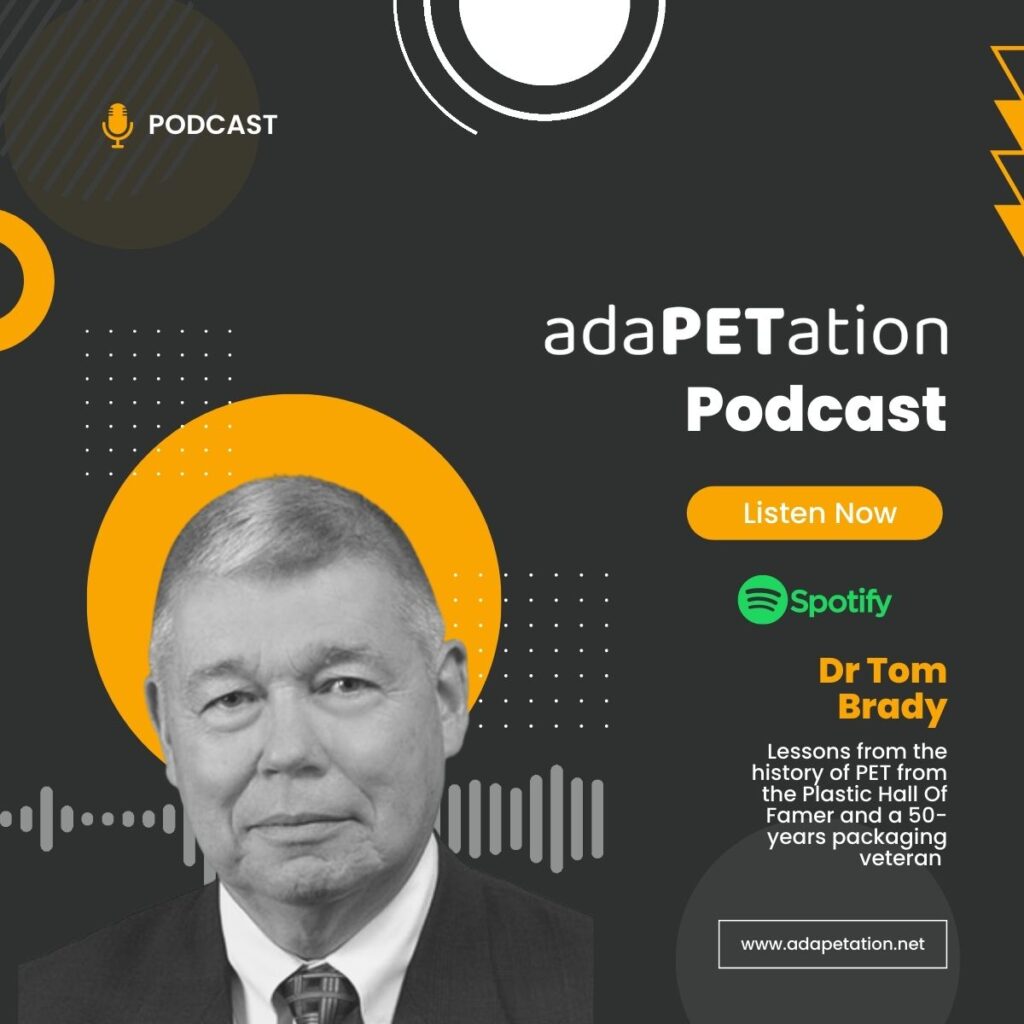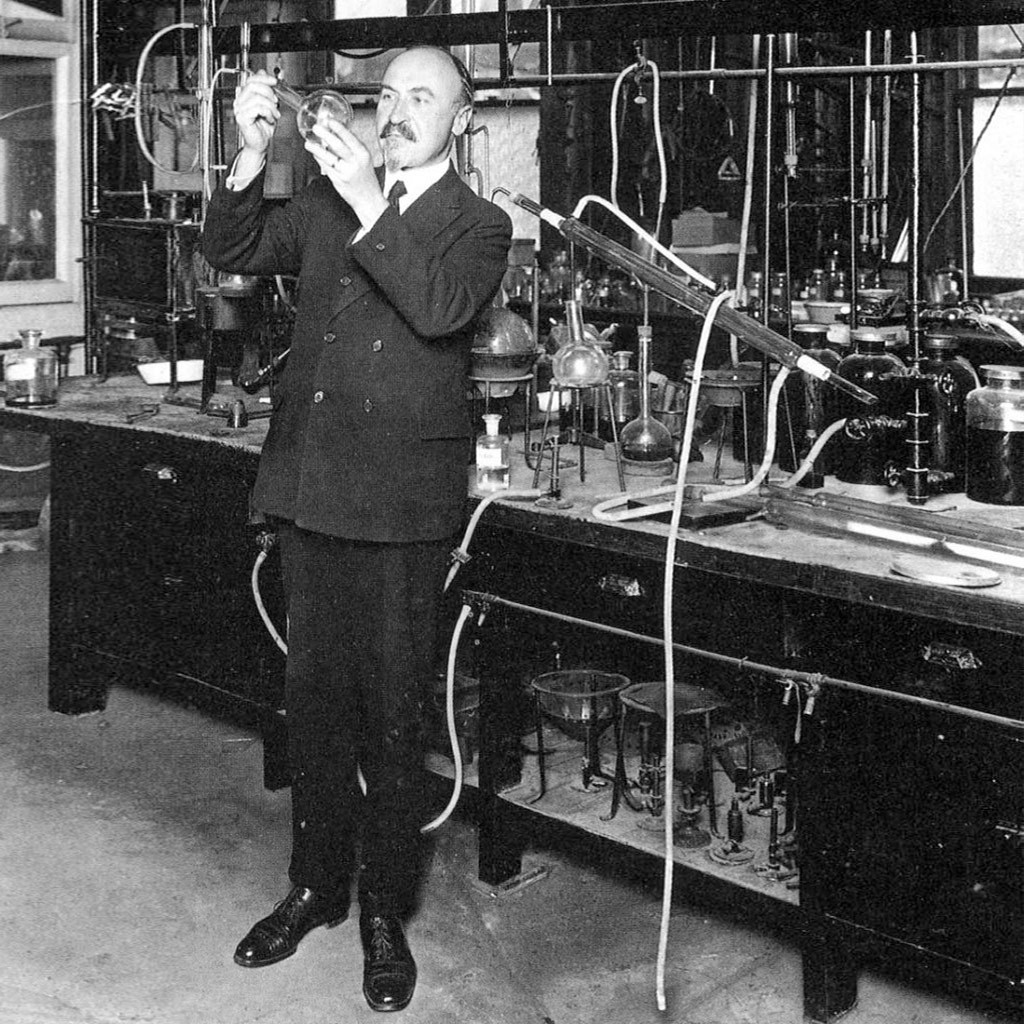
The founder of Plastic Technologies Inc, talks about an industry that he helped build, one that has touched almost everyone on the planet and the important teachings of his book, The History of the PET Bottle.

There are few people in the PET polymer industry with the depth of knowledge as Dr Tom Brady. The 50-year veteran, who began his career at Owens-Illinois, Inc in 1972, just as the carbonated soft drink companies started to ask their suppliers to create and offer family-size carbonated beverage containers.
The inquiry required an industry-wide conversion from glass and aluminum to plastic, a challenge gladly accepted by Brady and his colleagues. In a period of 10-years Owens-Illinois and its competitors rolled out a remarkable response, creating an entirely new industry that was capable of supplying sustainable PET packaging to the beverage, food, and personal care product industries.
When Owens-Illinois abandoned commercialization of the new and successful plastic PET container in 1985 because it was affecting O-I’s glass container business, Brady left O-I and founded Plastic Technologies, Inc, with the initial goal of helping the Coca-Cola Company to self-manufacture its own PET plastic containers.
The original disruptor, PTI has become a key technology development supplier and manufacturer of PET packaging over its 35-year history, working for many of the major global brand owners, resin suppliers, and machine manufacturers.
PTI has been known for developing and commercializing sustainable plastic packaging products and strategies and has spawned five recycling, manufacturing, and technology development subsidiaries, including Phoenix Technologies International, PTI-Europe, Preform Technologies, The Packaging Conference, and Guardian Medical USA, and PTI is planning for an exciting future by partnering with other leading industry recycling, manufacturing, and medical companies, here in the US and in Europe.
In the last 40 years, Brady has seen the world transformed by the arrival of his innovations. He holds six U.S. patents, received the Lifetime Achievement Award from the Plastics Industry in 2010, was inducted into the Plastics Industry Hall of Fame in 2012, and has received numerous other honors, including being named Entrepreneur of the Year in 1989, and Philanthropist of the Year with his wife, Betsy, in 2006.
After watching the products he made surpass all commercial expectations, he’s extremely optimistic that the industry can rise to some of the challenges that have come with its success – namely the issue of global plastic waste and the fierce backlash that has arisen as a result.
As the founder of one of the first companies founded to look at recycling for the likes of Coca-Cola and Colgate Palmolive, he feels that there’s a very simple solution to the industry’s issues surrounding poor recycling rates in the world’s largest economies, like the US.
A SIMPLE FIX FOR FLAGGING RECYCLING RATES
His simple cure to flagging recycling rates in the US is to pass federal legislation that imposes bottle deposit schemes already in place in 10 states to increase the return of bottles and other packaging.
“I can’t understand why our Congress can’t pass a national deposit bill that says that every bottle has to be returned. And it doesn’t have to be just PET. I mean, you could put deposits on soap bottles or milk bottles or whatever else. And it’s already demonstrated that if you do that, they will come back,” he says. “If they come back, they will get recycled. And oh, by the way, it’ll be less costly to recycle it if you do. I mean, I know my answer is we don’t have enough politicians and government officials that have enough. What we say in the United States gumption to even try something like that. But it’s demonstrated to work. And, you know, recycling in Germany is mandatory. They’ve made it mandatory. So I think that’s what’s missing is you’re not going to get people to do it voluntarily. We’ve already demonstrated that over the last 30 years as well. They need an incentive and they need a little insistence, meaning maybe penalties if you don’t do it.”
The shift towards these sorts of policies, he argues, would accelerate overall recycling of plastic from less than 15% now to between 30% and 50%.
“Pick a date, maybe 2030, there’ll be 30% to 50% of the same materials plastics recycled today that today are only recycled in 10 to 15%. I think that’ll happen,” he says. “There are a number of technologies that are being developed beyond what I’ve talked about with mechanical recycling. There’s enzymatic recycling where actually enzymes eat some of these things. And remember, an enzyme is a live creature. So there are lots of ways to get at this thing, I think, and I am a very big believer, of course I come from the world of science and engineering, but I am a very big believer that science and engineering and technology can get at problems that you and I don’t even know how to approach today. And it’s why, frankly, as an individual, I spend a lot of my money and time supporting technology developments way outside the area that we’re talking about, because I believe that the world is going to demand that in the future.”
Brady, who spent 50 years in the packaging industry and participated in the development of many of today’s standard plastic packaging technologies says that while facing unique challenges stemming from its success in replacing other packaging materials, the PET polymer industry is capable of making the changes required to put the planet back into balance. There’s still a lot that can be done to improve the material in terms of sustainability, he argues.
“I think that one of the things that plastic companies and brand owners can do and hopefully will do, and maybe this isn’t on the top of their list, but I think we can uncomplicated the packaging mix, for example, you know, a lot of what is being made now or what we call multilayer structures,” he says.
“I think that we could do more by using monolithic plastics instead of multi plastic kinds of things. I think we could get away with using fewer kinds of plastics for things like disposable packaging, for example, polyethylene and PET, do almost everything that you need. And if you only had two kinds of plastics like that, you can separate them by float sink, right? Because PET sinks and polyethylene floats. And so I think we could be uncomplicated by not using as many using the ones that are lent themselves at least today to current reuse.”
If you like this content and would like to help close the loop on plastic waste then join the AdaPETation Network by clicking on the button below.
Share it
Useful Links
THE HISTORY OF PLASTIC
Throughout the history of plastic, PET has been crucial in keeping food fresh with lightweight and durable packaging solutions that have helped reduce food waste for almost a century. Learn all about the invention of plastic and the important role it has played feeding people and saving the lives of humans and elephants in the adaPETation® timeline of the history of plastic.




